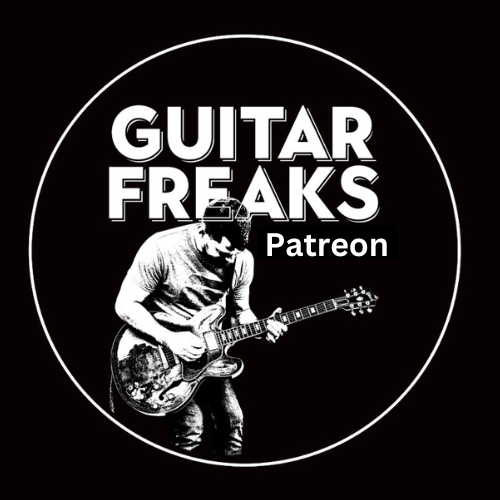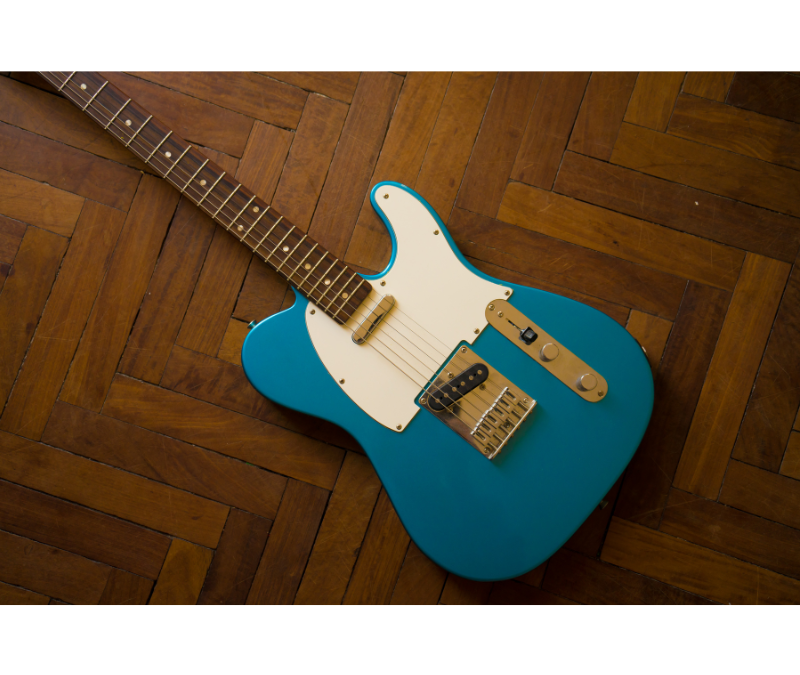Let’s cut to it. If you’ve been grinding away at guitar scales, chances are you’ve already stumbled on the major pentatonic guitar scale. But here’s the question: have you moved beyond memorizing the box shape and actually turned those five notes into music?
This scale isn’t just another exercise—it’s the foundation of countless riffs, hooks, and solos. In this guide, you’ll learn how to use the major pentatonic guitar scale with tabs, riffs, and creative practice strategies so you can unlock the sound of your guitar heroes.
Why the Major Pentatonic Guitar Scale Sounds So Good
The major pentatonic scale is essentially the major scale without its half-step “problem notes.”
Formula: 1 – 2 – 3 – 5 – 6
C Major Pentatonic: C – D – E – G – A
It’s clear, melodic, and built for phrasing. That’s why legends like B.B. King, Mark Knopfler, and Prince used it to create unforgettable lines.
👉 Want to dive deeper into scale systems? Check out our guide on guitar major scales and see how the pentatonic connects to modes and improvisation.

🎸 Join the Guitar Freaks Patreon!
Get SoloCraft E-Book FREE!
Join Guitar Freaks on Patreon and instantly unlock my full e-book SoloCraft—your step-by-step guide to fretboard mastery and crafting soulful solos.
New video lesson drops every Friday so you’ve always got a fresh, focused practice plan for the week.
👉 Don’t miss out—join now and grab your free copy!
Major Pentatonic Guitar Scale Tabs (Box 1 in C)
Here’s the movable Box 1 shape of the major pentatonic scale, rooted on the 8th fret:
e|-----------------8-10-|
B|-------------8-10-----|
G|---------7-9----------|
D|-----7-10-------------|
A|-8-10-----------------|
E|----------------------|
Move it down to the 3rd fret for G, the 5th fret for A, or the 1st fret for F. This portability is what makes the scale so powerful.
How to Write Riffs with the Major Pentatonic Guitar Scale
Step 1: Start Small
Pick 2–3 notes and repeat them. Here’s an example in G Major Pentatonic:
G|-------------2------|
D|---2-5---2-5--------|
A|-3-----3------------|
Step 2: Add Variation
Change the ending to create movement:
G|-------------2------|
D|---2-5---2-5---4-2--|
A|-3-----3------------|
Step 3: Use Expression
Slides, bends, and pull-offs make the notes sing.
G|-------------2/4-2----|
D|---2-5---2-5----------|
A|-3-----3--------------|
👉 For more ideas on phrasing, see our article on guitar phrasing.
Target Chord Tones with the Major Pentatonic Guitar Scale
The beauty of the major pentatonic guitar scale is that it naturally contains the root, 3rd, and 5th of the chord. That means when you target these notes, your riffs automatically “lock in” with the harmony.
Practice Plan for the Major Pentatonic Scale
Here’s a weekly plan:
- Monday: Practice Box 1 in three keys
- Tuesday: Connect Box 1 → Box 2
- Wednesday: Build riffs over a I–IV–V progression
- Thursday: Backing track improv
- Friday: Add slides, pull-offs, and double stops
- Saturday: Transcribe a riff from your hero
- Sunday: Share in the Guitar Freaks Discord
👉 Want structured prompts like this every week? Join Guitar Freaks Patreon and get practice cards, weekly lessons, and my digital FretDeck system.

🎸 Join the Guitar Freaks Patreon!
Get SoloCraft E-Book FREE!
Join Guitar Freaks on Patreon and instantly unlock my full e-book SoloCraft—your step-by-step guide to fretboard mastery and crafting soulful solos.
New video lesson drops every Friday so you’ve always got a fresh, focused practice plan for the week.
👉 Don’t miss out—join now and grab your free copy!
Iconic Songs That Use the Major Pentatonic Guitar Scale
Need proof this scale works? Here are four classics almost entirely built on the major pentatonic guitar scale:
- “Sweet Home Alabama” – Lynyrd Skynyrd (D Major Pentatonic)
- “My Girl” – The Temptations (C Major Pentatonic)
- “Sir Duke” – Stevie Wonder (major pentatonic sequences everywhere)
- “Start Me Up” – The Rolling Stones (pentatonic riffs galore)
👉 For more inspiration, check out blues guitar scales and see how pentatonics drive blues improvisation.
Your Shortcut to Mastering the Major Pentatonic Guitar Scale
Here’s the bottom line.
You can keep noodling in Box 1… or you can learn how to connect all five positions and turn them into real music.
That’s why I created FretDeck™: Pentatonic Guitar Scales—a hands-on system that teaches all 60 scale shapes with practice prompts so you can finally master the fretboard.
👉 Join Guitar Freaks Patreon today and get digital FretDeck access FREE. You’ll also unlock weekly lessons, practice plans, and exclusive riffs that aren’t on YouTube.

🎸 Join the Guitar Freaks Patreon!
Get SoloCraft E-Book FREE!
Join Guitar Freaks on Patreon and instantly unlock my full e-book SoloCraft—your step-by-step guide to fretboard mastery and crafting soulful solos.
New video lesson drops every Friday so you’ve always got a fresh, focused practice plan for the week.
👉 Don’t miss out—join now and grab your free copy!
And while you’re at it, jump into our Guitar Freaks Hangout Discord where you’ll meet other players, share riffs, and download my free ebook Fret Logic.
👉 Want to explore more ways to use scales in your solos? Check out our full guide on guitar triads and learn how to connect chords and scales across the fretboard.
👉 For a deeper dive into how pros use pentatonics, here’s a great lesson from TrueFire on Pentatonic Scales that complements what you’re learning here.










